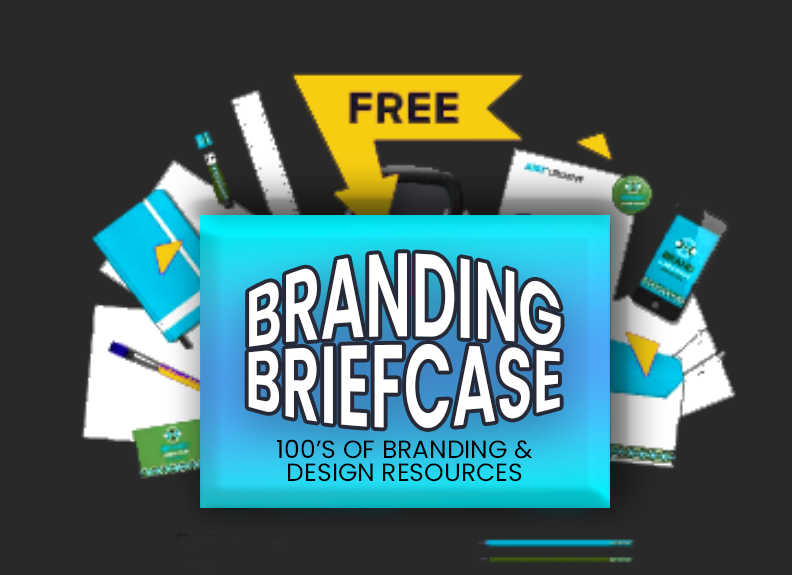This is a guest article contributed by Tom Buckland.
Branding is key for any business. Any successful company will tell you that strong branding is an essential element of attracting and maintaining the right audience. In our modern digital age, your business’ website is one of the main pillars of your communications strategy. As such, it is critical that you get the branding right across your website.
sponsored message
However, this isn’t necessarily easy. Even successful organisations with the largest marketing budgets can easily make fatal branding errors on their websites, directly impacting their bottom line.
Let’s take a look at some of the biggest branding mistakes companies make on their sites, and the steps you can take to avoid them.
Why Website Branding is Important
When making a website, (see our recommended web hosts) there are a number of different elements to keep in mind. You want your site to:
- Be easy to use
- Clearly communicate key information to your customers
- Attract traffic through SEO
- Convert those visitors into customers.
Underlying all of this, your site needs to be visually appealing. Otherwise, even if you do all of the above steps effectively, people are unlikely to take the time to read your site in detail. But even more importantly than this, your site needs to represent your brand. This is critical because your brand communicates who you are as a business. It should tell your customers everything you think they should know about your business. If not, why should they care?
Your branding should be deeply engrained in all of your communications, and particularly your website. 97% of consumers reported having searched for a product or service online at least once in the last 12 months. This means your potential customers are more likely to come across your business via your website than any other medium, meaning it is essential that your site represents and presents your brand in a clean and well considered manner.
sponsored message
The Biggest Branding Mistakes to Watch Out For
-
Inconsistency
Arguably the biggest branding mistake which companies make on their website is inconsistency. This may be noticed in how the website fits into the organization’s overall branding strategy, or simply be inconsistent branding across the website itself. Either way, this mixed message is confusing to website visitors, and waters down the overall brand message, reducing its impact and effectiveness.
It is a well-known foundation of communications that a company must have a solid, well-defined brand story which is implemented across all elements of communications, from logos and email signatures to online and print media. However, sometimes the process of designing a website can become such an intense project that it becomes insular, and all other considerations, including the business’ brand story, can be easily forgotten.
Avoid this from happening by strongly briefing your web designer on your company’s branding from the start. Provide them with a written brand strategy, complete with brand story, fonts, colors and so on, if possible. As the project progresses, remain vigilant that your branding requirements are being strictly adhered to and immediately ask the designer to get back on brand if anything goes off track.
-
Ignoring your competitors
Ignoring what your competitors are doing is always a big mistake: learning from the techniques they use makes it easier for you to stay ahead of the game. In business, especially marketing, success depends not only on doing well, but being the most attractive option.
Knowing your competitors inside and out also lets you do three things:
- See what they do well and what works for them, in order to take these elements and use them in your own business (adapted to your brand and consistent with your branding strategy, of course).
- See what does not work so well for them and avoiding making the same mistakes.
- Identify gaps in the market where there is consumer demand and establishing your company’s point of difference in the market.
sponsored message
Knowing any (or all) of these three things and applying that knowledge the right way will let you get ahead of your competition.
Performing a comprehensive competitor analysis is an essential part of the process and a great way to know what your competitors are up to and learn from their successes and mistakes. If possible, a competitor analysis should be conducted before you start building your site, so that you can integrate any relevant findings into its design. However, if your site is already up and running, this can still be a very useful thing to do, allowing you to implement ongoing improvements. In fact, regularly running a competitor analysis and then deciding which strategies to reverse engineer can keep you ahead of the game.
-
Being Scared to Make Mistakes
As we’ve discussed, careful planning is important, and operating within a solid branding strategy that takes your competitors into account is essential. However, this doesn’t mean that you shouldn’t take risks. In fact, taking a few risks and coming up with your own ideas is every bit as crucial as learning from the competition. Otherwise, you will end up with a carbon copy of what all your competitors are doing.
Risk-taking is essential to innovation: if no one ever went out on a limb to do something different, we would all be stuck doing the same thing over and over again. Taking a risk may seem scary, but it doesn’t have to be, as long as you approach it the right way, and take the appropriate precautions.
For example:
- Be open to all ideas, from the executives of your organisation to recent recruits: brainstorm constantly and encourage your team to do the same. Anybody can have a game changing idea!
- Critically assess each viable idea and analyse using a risk assessment framework.
- As a final step, cast multiple eyes over the final product to ensure the idea is consistent with your branding strategy.
Applying this approach to developing your website will help you to include fresh ideas to grow your business, while avoiding adverse risks and making sure you stay on-brand.

-
Relying On Too Much Text
Another mistake businesses often make is to think of their site as a mostly text-based medium. Long gone are the days when websites were pages of text, and sites like this are antiquated and un-engaging. When building your site for the first time, it will probably surprise you how little written text you actually need. Many people are visual learners, and videos, infographics, data tables and more can be much more effective in converting these users. Yes, you should have great visual content prioritised just as highly as written content, and as much as possible of it, both to drive organic traffic and to support SEO.
However, these two things are also useful to keep in mind when it comes to content:
1) You can have a blog with extensive written content, while keeping your core web pages free of too much text
2) Visual content and infographics are often linked to by other sites, creating a whole new avenue of traffic
Branding your website with engaging, visual-based content is essential for better user experience and a site which will convert your visitors into customers. Great video content in particular is extremely persuasive and engaging, and has been proven to drastically increase conversions. Other elements you could consider including are infographics, graphs and charts, as well as images. Depending on your brand, animations can also be a great element to grab attention, particularly for pop-ups and calls to action.
-
Having the Wrong Logo
sponsored message
Admittedly, this is more a general branding mistake than a website branding issue. However, your logo is a prominent element on your website, almost always above the fold, and often the first part of your branding a site user sees. It is therefore an essential factor in website branding. Be sure to have a strong logo that reflects your brand and that will work well with your site in terms of color and contrast. One of the biggest mistakes made by businesses is choosing a logo which may be impactful and visually appealing, but does not reflect the brand.
When designing your logo, take the time to make sure it visually represents your brands’ vibe as well as its values and goals. Pay attention to details like whether it could be easily scaled down to small sizes without losing it’s effectiveness, and how it will look on your site banner. There are also small tricks to keep in mind when you integrate your logo on your site. For example, make sure that your designer includes your logo in the tab at the top of your site: there is nothing less professional than a website which loads with the generic browser logo at the top. Ensure your FavIcon is your logo or similar.
-
Being Too Generic
One of the great things about operating in the digital age is that there are so many systems, white label products and services that we can use to quickly and easily whip up products which once required a large investment of time and money. Whereas previously you needed to hire a developer to code a website from scratch, now there are website builders that allow you to build your own site with a drag-and-drop template. Before you would have needed to hire a photographer to take photos for your promotional materials, now you can get stock photos online for little to no cost.
The drawback? Everyone else is using these same services, including your competitors. A mistake which is becoming increasingly common is to use the same website templates with the same tired stock images that customers have already seen elsewhere. Consumers are becoming wise to this and will be put off by sites which look the same, or at least will see the brands connected to them as generic and uncreative at best, and plagiarising at worst. This issue can easily be avoided and does not require drastic amounts of money or effort. You can still use templates to build your site, for example, it’s just important to make sure you customize the template in order to best promote your brand.
What other branding mistakes are common on websites?



